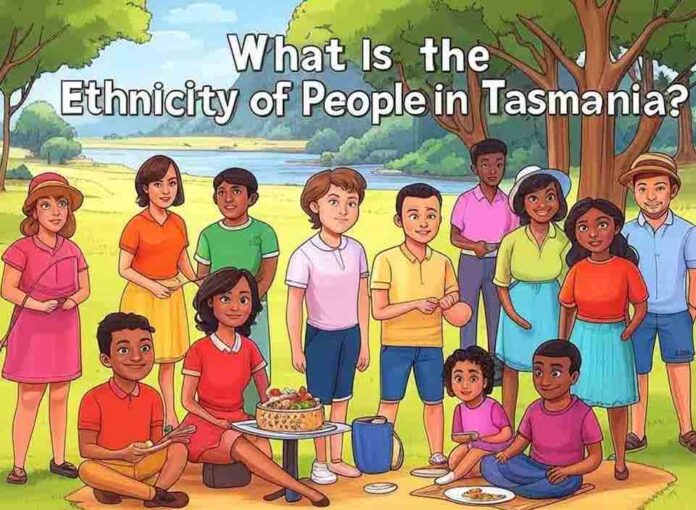Tasmania, Australia’s southernmost state, is an island rich in history, culture, and natural beauty. While it’s often celebrated for its stunning landscapes and clean air, the ethnic diversity of its population is equally intriguing. What is the ethnicity of people in Tasmania, and how has its history shaped the demographic landscape? In this blog, we’ll explore the island’s Indigenous roots, its colonial history, and the multicultural tapestry that defines Tasmania today.
A Brief Overview of Tasmania’s Demographics
As of the most recent census, Tasmania has a population of approximately 541,500 people, making it the least populous state in Australia. Its population density is low, averaging about 8 people per square kilometer, which reflects the island’s vast wilderness areas and smaller urban centers.
The Indigenous People of Tasmania
The Palawa People
Long before European colonization, Tasmania was home to the Palawa people, its Indigenous inhabitants. Archaeological evidence suggests that Indigenous Tasmanians lived on the island for over 40,000 years, developing a unique culture and deep connection to the land.
Key Facts:
- The Palawa people were isolated from mainland Australia after the last Ice Age, creating distinct cultural practices.
- Their lifestyle revolved around hunting, fishing, and gathering.
- They had a deep spiritual connection to the land, reflected in their oral traditions and art.
For more on Tasmania’s Indigenous history, visit the Tasmanian Aboriginal Centre.
The Impact of British Colonization
In 1803, the British established a settlement in Tasmania, then known as Van Diemen’s Land, as part of their colonial expansion. This marked a turning point in the island’s demographic history.
The Arrival of Europeans
The majority of early European settlers were British, including convicts, soldiers, and free settlers. Over time, Tasmania’s population grew, and its demographic makeup shifted toward a predominantly European identity.
Convict Heritage:
- Between 1803 and 1853, more than 75,000 convicts were transported to Tasmania.
- Many convicts contributed to building the island’s infrastructure, leaving a lasting legacy.
Decline of the Indigenous Population
Unfortunately, British colonization had devastating effects on the Palawa people. Conflict, disease, and displacement caused a significant decline in the Indigenous population. Today, efforts are being made to preserve and celebrate Palawa culture, with growing recognition of their contributions to Tasmania’s identity.
The Ethnic Composition of Tasmania Today
Predominantly European Heritage
The majority of Tasmania’s population identifies as having European ancestry, with British and Irish heritage being the most common.
Key Statistics:
- Over 70% of Tasmanians identify as having Anglo-Celtic ancestry (English, Irish, Scottish, and Welsh).
- Smaller European communities, including those of Italian, German, and Greek descent, also contribute to the island’s ethnic makeup.
Indigenous Population
While the Indigenous population declined sharply during the colonial era, there has been a resurgence of cultural pride among the Palawa people. Today, around 4.6% of Tasmanians identify as Aboriginal or Torres Strait Islander, reflecting ongoing efforts to revive and celebrate Indigenous culture.
Multicultural Diversity
Although Tasmania is less ethnically diverse than mainland Australia, its multicultural population has grown in recent years, thanks to migration and globalization.
Growing Communities:
- Asian Heritage: Communities from China, India, and Southeast Asia have grown, particularly in urban areas like Hobart and Launceston.
- African and Middle Eastern Migrants: Recent immigration programs have introduced new cultural influences.
- Pacific Islanders: Migrants from Fiji and other Pacific nations contribute to Tasmania’s diversity.
Cultural Influences in Tasmania
Indigenous Cultural Revival
Efforts to recognize and celebrate Indigenous culture are evident in festivals, art, and educational programs. Initiatives like the putalina Festival and the recognition of sacred sites like kunanyi/Mount Wellington highlight Tasmania’s Indigenous heritage.
British and Irish Traditions
The influence of British and Irish settlers is still evident in Tasmania’s:
- Architecture: Georgian and Victorian-style buildings in Hobart and Launceston.
- Sports: Cricket, rugby, and other sports brought by the British.
- Festivals: Events like the Australian Wooden Boat Festival reflect maritime traditions.
Multicultural Celebrations
Tasmania’s growing diversity has introduced new cultural festivals and cuisines:
- Lunar New Year Celebrations in Hobart.
- Indian and Sri Lankan food festivals showcasing vibrant flavors.
- African drumming and dance workshops at community events.
How Tasmania’s Ethnic Diversity Shapes Its Identity
Tasmania’s ethnic composition contributes to its unique identity as a place where history, tradition, and modern multiculturalism intersect. This diversity is evident in:
- Cuisine: From fresh seafood to international dishes, Tasmania’s food scene reflects its multicultural influences.
- Arts: Indigenous art galleries, multicultural festivals, and contemporary exhibitions like those at MONA (Museum of Old and New Art).
- Community: A welcoming atmosphere that values inclusivity and cultural exchange.
Challenges and Opportunities in Tasmania’s Ethnic Diversity
Challenges:
- Rural Isolation: Ethnic diversity is concentrated in urban centers, with rural areas being less multicultural.
- Historical Injustices: Ongoing efforts are needed to address the historical mistreatment of Indigenous Tasmanians.
Opportunities:
- Cultural Exchange: Multiculturalism enriches Tasmania’s community life through festivals, cuisine, and arts.
- Inclusive Policies: Programs promoting diversity and reconciliation foster unity and cultural pride.
Conclusion: What Is the Ethnicity of People in Tasmania?
Tasmania’s ethnic composition is a reflection of its complex history and evolving identity. From its Indigenous roots to its British colonial heritage and growing multicultural communities, the island’s population is as diverse as its landscapes. While the majority of Tasmanians identify as having European ancestry, the presence of Indigenous and multicultural communities adds depth to the island’s cultural fabric.
Whether you’re drawn to Tasmania’s rich history, vibrant arts scene, or inclusive community spirit, the island offers a unique blend of tradition and modernity that’s worth exploring.
Call to Action
What aspects of Tasmania’s ethnic diversity interest you the most? Share your thoughts or experiences in the comments below! If you found this article insightful, don’t forget to share it with others curious about Tasmania’s rich cultural heritage.










